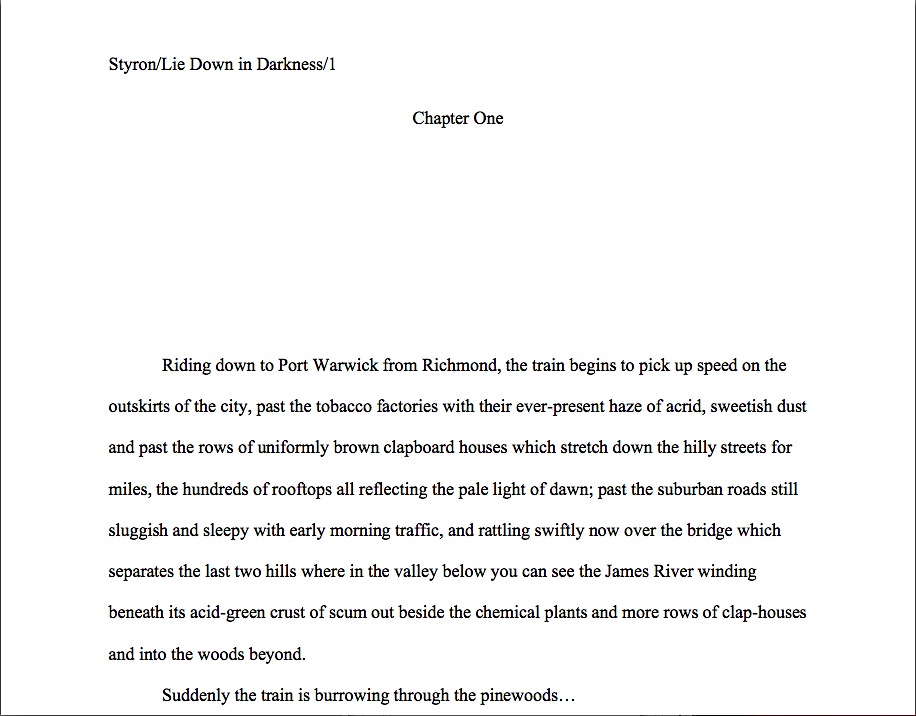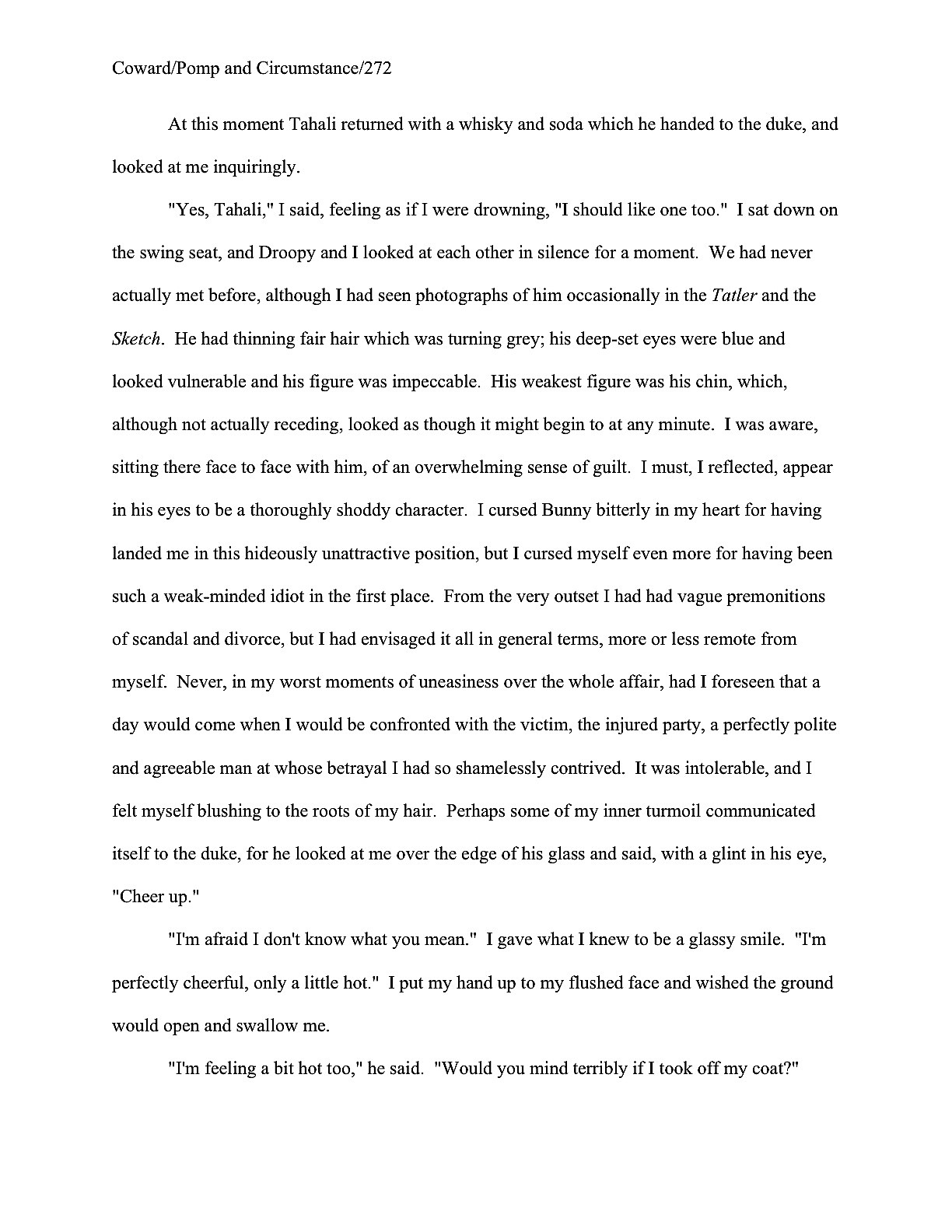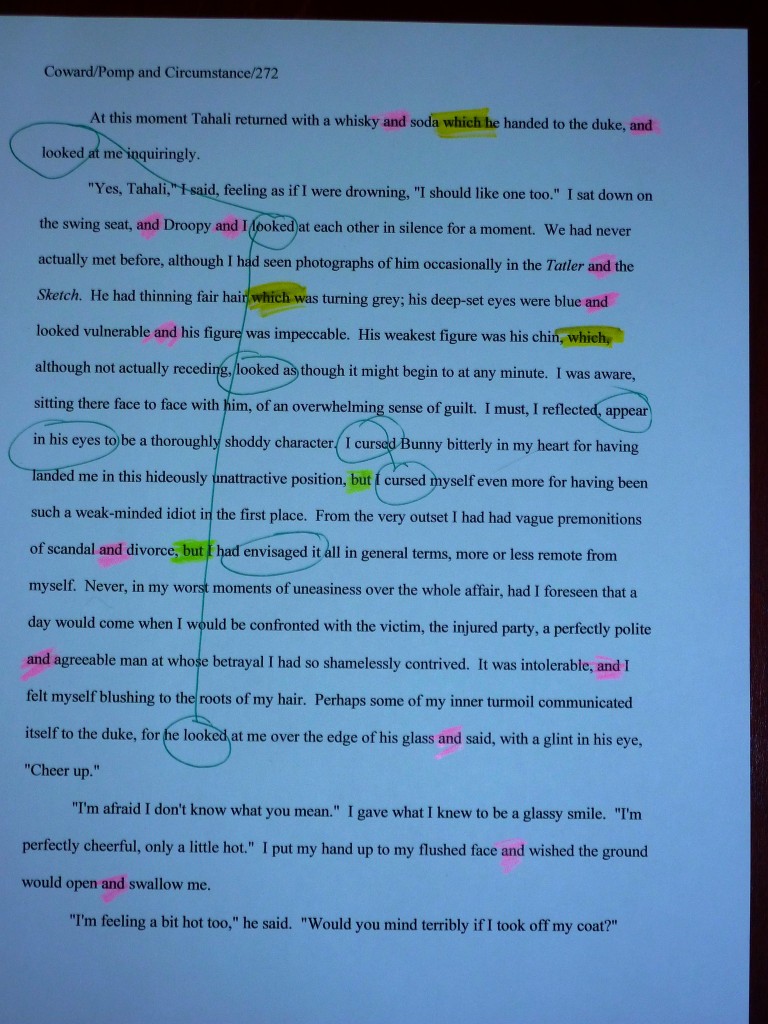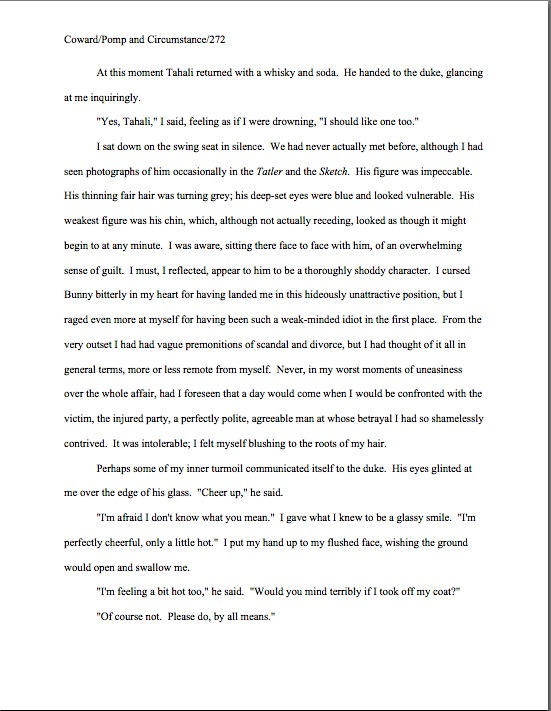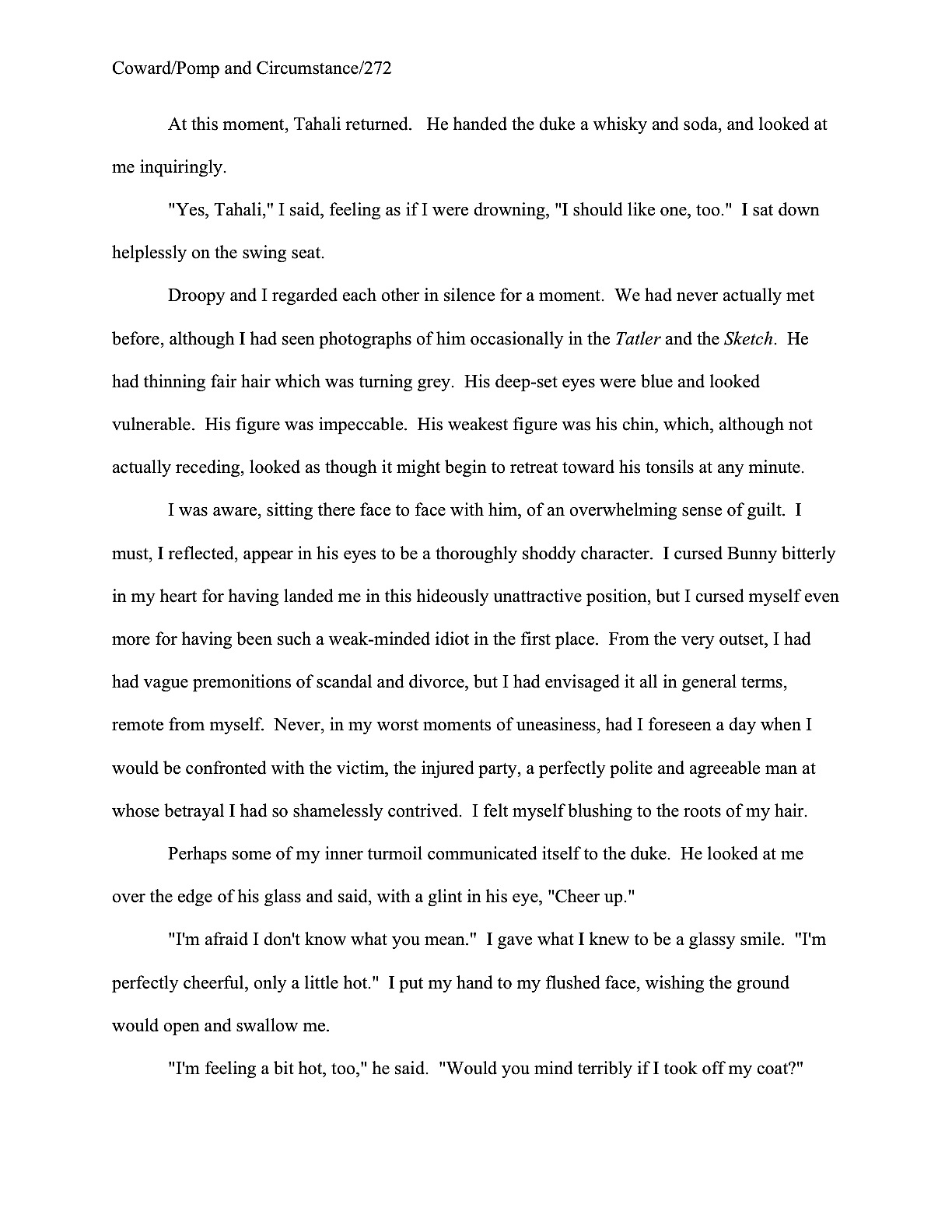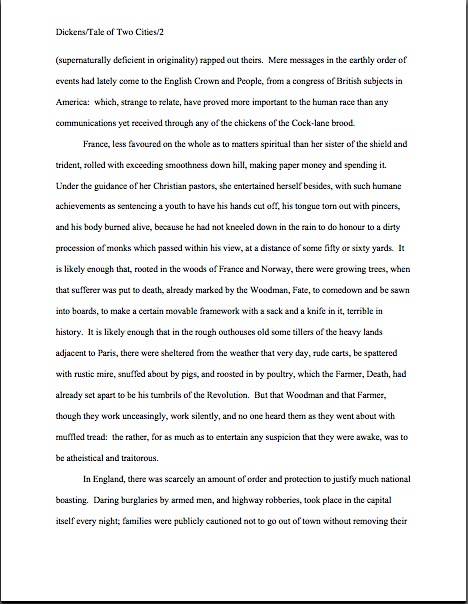After Friday’s omnibus rant on the frequently-related subjects of Frankenstein manuscripts — texts written over such a long period and/or revised so often that they read as though several different authors had written their constituent parts, then stitched them together with visible seams — and phrasing repetition in submissions, I realized that in my great eagerness to stop you fine people from repeating yourselves inadvertently, I had neglected to provide you with much evidence why. I made it clear that seeing the same phrasing turn up again and again on the page does in fact irritate our old pal, Millicent the agency screener, almost as much as it tends to annoy the agent for whom she works, the editor to whom that agent likes to sell manuscripts, and, ultimately, the reader that buys the published book.
Today, I’m going to begin to rectify that. I feel a revision series coming on.
My apologies for the earlier oversight, of course. As I may have mentioned once or twice before, it’s exceedingly easy for those of us who read manuscripts for a living to forget just how differently we read than everybody else. Obviously, that’s necessary in order to edit well It’s not as though an editor (or an agent, or an agency screener) can plop herself down and read a book like any other reader; it’s our job to be alive to every detail. I like to think of myself as the book’s advocate, trying to figure out all of the little ways to make it as beautiful and marketable as humanly possible.
And no, in response to what a good third of you just thought very loudly, beautiful writing is not always marketable, any more than marketable writing is always beautiful. (And while I’m bursting philosophical bubbles: I hate to break it to you, Keats fans, but truth is not always beauty, and beauty is not always truth. Kindly make a note of that.)
Ideally, a manuscript should be both elegantly written and market-appropriate — which means to the pros, contrary to popular opinion amongst frustrated aspiring writers, not that it should resemble the latest bestseller, but that its tone, subject matter, and use of literary conventions is appropriate for the book category for which it is aiming. It should also, if the editor can possibly manage to nudge it in this direction, be written in a voice and vocabulary appropriately challenging for its target readership.
Bringing out any of these laudable traits is not only a matter of critiquing what could be improved; quite a lot of what I do involves helping the author see what is already good and could be made better. Part of being a thoughtful freelance editor — as opposed to a careful copyeditor, the nit-picky soul who concentrates on making sure that the manuscript is clear and the sentences grammatically correct, the minimum standard for professional writing, or the acquiring editor, the eagle-eyed individual a publishing house employs to sift through all of the submissions agents offer and figure out what would appeal to the publishers’ already-established audience(s) — involves not only checking for possible red lights that might lead to rejection, but also figuring out what a manuscript’s strengths are, as well as why it will appeal to its target audience.
Again, those are not necessarily the same thing, right? Most aspiring writers need to be reminded, I’ve noticed, what is good about their work. Or even told what the selling points for their books are.
There’s a pretty good reason for this, actually. Throughout the writing process, it’s awfully easy to start to think of the effort you’ve put into a book as its most important characteristic. As anyone who has ever listened to more than ten consecutive pitches at a writers’ conference knows to his sorrow, rejected writers are only too prone to wail, “But I’ve spent the last two/five/twenty-five years writing this book!”
Realistically, publishing houses do not acquire books simply because someone went to the trouble to write them. Nor, contrary to pervasive speculation amongst aspiring writers, will readers pick up a book simply because somebody happened to write it.
Not ones who do not already know the author personally, at any rate. And while I hate to raise any doubt in your mind about your Aunt Marge’s support of your writing aspirations, but don’t count on her being willing to buy your book when it is published. Kith and kin have an understandable but nasty habit of expecting the author they love to provide them with free copies.
For the sake of your future professional happiness, you might want to dash that little dream of theirs long before you sign a publishing contract, if not before you sign an agent. These days, authors receive many fewer copies of their freshly-published tomes gratis than in days of yore — and publishers expect them to use those freebies for promotional purposes, not to hand them out willy-nilly to all of their coworkers at the day job the advance was not large enough to enable them to quit.
Oh, should I have warned you that I was about to take a pin to another bubble? I’m afraid it’s all too true, especially for first-time authors: while twenty years ago, advances were frequently large enough to permit a novelist, if not to walk away from non-writing employment altogether, at least to take a few months off work to make requested revisions, today, they generally are not. These days, they tend to hover somewhere between an honorarium and a nice tip.
Which is why it’s vital that you know up front: it’s not all that uncommon for publishers to expect their authors to pay for that copy Aunt Marge expects you to hand her, signed. Yes, you can usually buy them at a substantial discount, but do be aware that any copies you buy that way will not count toward the book’s sales totals.
That means, in practice, that all a new author gains from obtaining a copy for Aunt Marge is Aunt Marge’s grateful affection. Which you already have, right?
Tell her that she’s going to need to buy her own copy for you to inscribe lovingly. If she balks, tell her that I said it was the best way she could support your dreams of becoming a writer. Or at least one who might conceivably be able to make a living at it.
I have sensed raised hands out their in the ether throughout the entire course of that little digression, however. Yes? “But Anne,” many of you protest, lowering your aching arms, “I’d like to get back to that earlier point about editors not acquiring books simply because writers write them. What ever happened to that oft-spouted truism, good writing always finds a home?”
Oh, dear. Here comes another bubble. There’s a reason one so seldom hears this platitude falling from the lips of agents and editors at conferences anymore: it’s no longer true. Good writing most emphatically does not always find a home — not at an agency, and certainly not at a publishing house.
Actually, it never was, but until about five years ago, it was easier to pretend that the only reason a manuscript would not attract an agent was some flaw in the writing. Now, no one who handles books professionally would seriously argue that good books always get picked up. And that’s hard for aspiring writers to accept, because, let’s face it, we would all prefer to believe that agencies and publishing houses are charitable institutions, non-profit entities solely devoted to the perpetuation of fine literature.
Do I really need to stick a pin in that one?
So what does prompt publishers to acquire one well-written rather than another, you ask? Would I sound like a broken record if I suggested that it was because of the first’s strengths?
Which is why, to return to my earlier point (we all knew it would happen eventually), the length of time it took to write a book is precisely the wrong thing to mention in a query letter or pitch; it’s widely considered unprofessional. Millicent is apt to regard queries that include statements like I have spent seven years writing NOVEL, GREAT AMERICAN as not only a waste of page space, but as a studied appeal for her sympathy.
“Why on earth would I care how long this manuscript took to write?” Millicent murmurs into her omnipresent too-hot latté. “And why would I be more favorably impressed by a seven-year effort than one that took only six? What matters is on the page, not what Herculean efforts it took to get it there.”
Let me repeat that sentiment, as it’s awfully important: at the submission stage, manuscripts are evaluated based upon what actually appears on their pages, not the writer’s intentions, effort, or even what the book might look like after a conscientious editor’s had a few rounds with it.
While this may seem self-evident to my savvy readership, many aspiring writers seem to have a hard time accepting this, judging by how often justifications and explanations seem to find their way into queries, pitches, and even book proposals. From a professional point of view, this information just isn’t relevant.
But that’s not the only reason that including it could hurt you. Because it’s quite standard for both agents and editors to request revisions after taking on a book project — see my earlier observation about how involved professional readers can get with manuscripts they like — it’s prudent to assume that the pros in your future will expect you to be able to incorporate feedback in a timely and reasonable manner. The agent of your dreams’ reaction to a detailed account of the five years you invested in producing the manuscript is less likely to be, “Gee, this book must be worthwhile, for you to have worked on it so much,” but “Heavens — if a single draft took five years, how long will any revisions I want take?”?
Save the probably quite interesting story of how you churned out that 400-page novel in the scant ten-minute increments you managed to snatch between your day job and your night job for future interviews. Trust me, your reading public will eat it up.
In your queries and pitches, stick to the information that Millicent actually needs in order to decide whether to request pages. As submitting writers are all too prone to forget, publishing is a business, not an art form — agents and editors acquire books they believe are marketable, not just ones they believe are well-written. And as I have mentioned several hundred times before, they do not — contrary to the hope of most submitting writers — read the entire submission before making up their minds on either point.
Anyone care to tell the class at what point in the average submission Millicent stops reading? Think on it, and I shall give you the answer at the end of this post. (Hint: it doesn’t necessarily correlate to the number of pages the agency asked you to send. Not at all.)
Up go those hands again. “This is all very interesting, Anne, but it seems like a rather clumsy segue from Queryfest into craft issues — and haven’t we already made that bumpy trip? How does any of this depressing insight into the world of publishing relate to my revision process?”
An excellent question, inveterate hand-raisers. Here’s the short answer: quite a lot.
Oh, you wanted a long answer, too? Here goes: the norm of swift judgments means that it’s not reasonable to expect your work to be evaluated as a whole, at least not at first. If the opening of the manuscript or book proposal does not grab Millicent, it’s safe to assume that she will not read on. So if you have limited revision time at your disposal, it’s smart strategy to concentrate on the first 50 pages of your manuscript — the usual initial request from an agent — or, in a pinch, the first 5.
Did that last number make you do a double-take? If you are planning to head to a writers’ conference anytime soon, burnishing the opening pages until they shine is imperative: not only is the first five pages of the manuscript the standard writing sample, but it’s the most anyone is at all likely to ask to see within the context of a pitch meeting.
Do I sense an undercurrent of amusement out there? “Are you seriously taking the time to justify my doing any revision at all, Anne?” long-time readers of this blog ask, chuckling. “We all know what a stickler Millicent can — and indeed, should — be. Or are you once again leading us down the primrose path to some well-concealed eventual point?”
Well, the importance of revision bears repeating, chucklers, but you’re right: my little peroration was indeed warming you up for a pet peeve that I suspect not all of you will agree is problematic on the page. Or so professional readers like yours truly surmise from how pervasive the problem is in submissions — particularly in openings.
I’m speaking, of course, to the ubiquitous practice of using parallel sentence structure and phrasing repetition to create invocatory rhythms that don’t quite work.
Invocatory rhythms are one of the most popular tools aspiring writers use to beautify their narratives, a kind of sing-song rhythm that alerts the reader that Something Literary is Going on Here. One of the easiest ways to add this music to a text is through word and phrase repetition. Take a gander at a fairly representative sample:
Musette ran through the corridor, ran like the wind, ran as though lions were behind her and the open arms of a knight in shining armor in front. Didn’t she deserve her freedom, after all this time? Didn’t she deserve a life free of the incessant demands of boss, husband, co-worker, photocopy machine, cat? Didn’t she, in fact, deserve to breathe the fresh air of autonomy, unfettered by any limitations whatsoever, free as the day she had been born to freedom fighters in recently-liberated Freedonia twenty-four wild years ago?
See the problem? No? Okay, let’s take a peek at it through Millicent’s experience-sharpened peepers.
Musette ran through the corridor, ran like the wind, ran as though lions were behind her and the open arms of a knight in shining armor in front. Didn’t she deserve her freedom, after all this time? Didn’t she deserve a life free of the incessant demands of boss, husband, co-worker, photocopy machine, cat? Didn’t she, in fact, deserve to breathe the fresh air of autonomy, unfettered by any limitations whatsoever, free as the day she had been born to freedom fighters in recently-liberated Freedonia twenty-four wild years ago?
The problem is clearer now, right? Not only does this innocent-looking paragraph harbor a heck of a lot of word and phrase repetition — enough that our Millie may murmur under her breath, “Wow, doesn’t this writer know any other words?” — but that eye-confusing reiteration is encased in identical sentence structures. The result is a little something we professional readers like to call structural repetition, a percussive repetition of similarly-structured sentences (or sentence fragments) intended to make a rhythmic point.
This presents a voice and revision problem, in addition to being a notorious Millicents’ pet peeve. Why? Well, part of the issue here is editorial: merely broadening the vocabulary, the usual fix for word repetition, would not solve this problem. Take a gander:
Musette ran through the corridor, sped like the wind, fled as though lions were behind her and the open arms of a knight in shining armor in front. Didn’t she deserve her liberty, after all this time? Didn’t she merit a life free of the incessant demands of boss, husband, co-worker, photocopy machine, cat? Didn’t she, in fact, have an inherent right to breathe the fresh air of autonomy, unfettered by any limitations whatsoever, as unconstrained as she had been on the day she had been born to rebels in recently-removed-from-the-hegemony-of-a-repressive-r?gime Freedonia twenty-four wild years ago?
Most writers would believe that the redundant phrasing problem has been solved. To a professional reader, though, this passage would still read as structurally repetitious, despite the wording’s being more varied (and therefore more interesting) this time around. That reaction is apt to confuse self-editors, who would tend to see the nice, pulsing rhythm pushing the paragraph forward, rather than the probability that the too-similar sentence structures will cause the reader to zone out a bit as the paragraph winds its way to its eventual end.
Not to mention the virtual certainty that Millicent will murmur, “There’s nothing inherently wrong with this narrative trick, but why must this writer foist it on us so often over the course a single paragraph?”
You’ve got one heck of a point there, Millie. Like every other narrative device, structural repetition works best when it is used sparingly.
How sparingly, you ask with fear and trepidation? Two or three times, say, in the course of a manuscript, to draw the reader’s attention to particularly important passages. Even within the context of this short excerpt, we can see how much more effective the first use of structural repetition is if we remove the second.
Musette ran through the corridor, sped like the wind, fled as though lions were behind her and the open arms of a knight in shining armor in front. Didn’t she deserve her liberty, after all this time? She longed with the urgency of a sneeze for a life free of the incessant demands of boss, husband, co-worker, photocopy machine, cat. Clearly, she had an inherent right to breathe the fresh air of autonomy, unfettered by any limitations whatsoever. Her rebel parents would have been proud of her as a citizen of Freedonia.
Didn’t like it that way? Okay, let’s switch where the structural repetition falls. While we’re at it, take out the clich? about the wind; even one less hackneyed concept can make a difference in how Millicent responds to a clich?fest like this.
Musette sped through the corridor as though lions were behind her and the open arms of a knight in shining armor in front. Didn’t she deserve her liberty, after all this time? Didn’t she merit a life free of the incessant demands of boss, husband, co-worker, photocopy machine, cat? Didn’t she, in fact, have an inherent right to breathe the fresh air of autonomy, unfettered by any limitations whatsoever? The blood of her rebel parents sang in her blood.
Was that a sudden gust of non-clich?d wind that just made my cat topple over, or did a significant minority of you just sigh gustily?
“I see that there are repeated words in the original version, Anne,” some of you concede, “but frankly, I liked it best. Surely, the decision whether to incorporate structural repetition is an authorial stylistic choice, not a matter best left up to an editor. Unless you have just inadvertently proven your point about not every reader’s liking every well-written narrative voice, and you are demonstrating yourself to be the kind of knuckle-dragging troglodyte who eschews the joys of literary fiction in favor of novels that — ugh — feature a plot?”
Actually, I’ve been known to read and enjoy both, literary snobs. What’s more, I’ve read plenty of literary fiction with strong plots and genre fiction featuring beautiful language. So there.
But you are obliquely correct, sighers, to believe that the original version above was more likely to have dropped from the fingertips of a writer with specifically literary aspirations than one who was aiming for a more mainstream readership. Since invocatory rhythms are quite common in poetry, this style turns up very frequently in novel and memoir submissions, particularly in those that are either literary fiction or are other types of manuscript written with a literary tone. It just sounds pretty, right?
“If the writing’s lovely on an individual sentence level,” sighers everywhere argue, “how could that be problematic in a submission?”
In several ways, actually. Rather than telling you why, though, I shall show you.
Here is the single most famous example of invocatory prose in English literature, the opening to Charles Dickens’ A TALE OF TWO CITIES. Yes, I use this particular example fairly frequently, but humor me here: Dickens, bless his now-still heart, has provided us with a lulu of an example of why structural repetition is problematic in print. Just for kicks, pretend that you have never seen it before, and try to read like an agency screener.
To facilitate that laudable endeavor — and to give you the opportunity to judge for yourself whether all of this textual repetition provides a compelling entrée into the story that follows, here is not just the well-known opening, but the next page as well. As always, if you find you are having trouble making out the individual words, try holding down the COMMAND key and pressing + to enlarge the images.
Uncle Charles’ voice is certainly distinctive, isn’t it? Hard to conceive of a more memorable opening, rhythmically speaking. But if these were the first two pages of a submission today, virtually any Millicent would have rejected it by line three. Any guesses why?
If your hand instantly shot into the air, alerting me to your trenchant observation that it was because the first paragraph is one interminable run-on sentence — 119 words, connected incorrectly by commas, rather than semicolons, sacre bleu! — congratulations. You deserve a gold star for the day.
Ditto if you zeroed in upon the apparently random capitalization of nouns, the bordering-upon-criminal punctuation choices, the ubiquitous logical contradictions (yes, I know it’s meant to be ironic; think like a screener here and look for reasons to shout, “Next!”), the second paragraph written entirely in the passive voice, and the fact that two paragraphs into the piece, the reader still has absolutely no idea who the protagonist is or what’s going on. Oh, and by current U.S. publishing standards, two pages is a long time to expect a reader to be willing to wait for anything at all to happen.
Stop rolling your eyes, U.K. writers: that’s not a matter of national impatience, but a regionally different expectation of the value of a reader’s time. Over here, it’s considered disrespectful to assume that the reader will put his life on hold while the narrative to meanders for 10, 20, or 50 pages before establishing the book’s premise. Nor is echoing the wording of a classic considered particularly clever on this side of the Atlantic: since the publishing world has historically been pretty diverse in North America, the notion that any well-read person will be familiar with the same books just doesn’t make sense.
That, too, has serious implications for revision. It’s not at all difficult to picture a New York-based editor furiously scribbling in Uncle Charles’ margins. “Which was it — the best of times or the worst of times? It could hardly have been both; it’s the author’s job to show us, not the reader’s job to guess. Commit to one or the other!”
So perhaps that editor deserves the rest of today’s gold stars: although any one of the perfectly valid objections we have discussed might have prompted Millicent to cry, “Next!”, the structural repetition is what most pros would have noticed first. To see why, take this little test: stand up right now, take two steps backward from your computer monitor, and read those two pages again.
Yes, of course I mean it. I’m trying to train your eye to spot the monster’s return.
Notice the visual pattern? Millicent would have spotted it as soon as she pulled the first page of ol’ Charles’ manuscript out of the envelope. Actually, if you’ve been revising for a while, you might have caught that the structural repetition problem without backing off. A solid tip-off: the verb to be appears 14 times within the first sentence.
It was the best of times, it was the worst of times, it was the age of wisdom, it was the age of foolishness, it was the epoch of belief, it was the epoch of incredulity, it was the season of Light, it was the season of Darkness, it was the spring of hope, it was the winter of despair, we had everything before us, we had nothing before us, we were all going direct to Heaven, we were all going direct the other way — in short, the period was so far like the present period, that some of its noisiest authorities insisted on its being received, for good or for evil, in the superlative degree of comparison only.
This is a level of verb variation that would make Millicent long for the comparatively varied vocabulary choices of See Dick run, Jane. Run, Jane, run. Unfortunately for her patience, over-reliance on the verb to be has not disappeared into the murky annals of history; present-day writers engage in it all the time, although they do tend to be able to find the period and RETRUN keys a little more often than Uncle Charles managed. This pattern crops not only in manuscripts intended to delight and entertain early readers, either — Millie often sees adult fiction submissions that read like this:
Montrose was morose. His day was going badly; it had been a long one. His boss was on a rampage about who knew what. To top it off, his car was ticketed when he reached the street after work, traffic was bumper-to-bumper on the way home, and his cat was not speaking to him after his unusually lengthy absence from home.
Mighty word-repetitious, isn’t it? I blame Ernest Hemingway — yes, and Dickens, and all of those other well-regarded novelists of bygone days held up to writers in English Lit classes as examples of sterling prose. Readers today simply expect more phrasing variation. Perhaps because computer use has made all of us read a trifle faster: a backlit screen encourages the eye to skim, after all.
It’s not just the repeated words and phrases that would raise professional readers’ weary eyebrows in these excerpts, though — it’s the phenomenon of consecutive sentences being set up in the same way. No matter how great your high school English teacher told you Uncle Charles’ opening was, it’s dull for the reader to read the same It was X, it was Y sentence structure over and over again. Or, indeed, any sentence structure, if it is repeated often enough within too few lines of text.
Unfortunately, a lot of writers just adore structural repetition: it reads a bit like a prayer. It can provide a driving, almost galloping rhythm to a page. Many aspiring writers see that rhythm in the work of authors they admire and say, “By gum, I’m going to make my paragraphs read like that!”
And they do. Oh, my heavens, do they do it often. Sometimes, they make their paragraphs read this repetitiously several times per page.
Don’t mind that loud rapping. It’s merely Millicent pounding her head against a wall, moaning, “Make it stop! Make it stop!”
That’s what happens when perfectly legitimate voice choices run amok, my friends. Like any magic trick, repetitive structure loses its ability to charm when the reader sees it too often. After a surprisingly short while, it can start to come across less as an interesting stylistic choice than as a sort of narrative tic.
Don’t believe me? Okay, go back and reread the first two pages of A TALE OF TWO CITIES. How many iterations of It was… did Dickens put you through before you first thought Oh, come on, Chuck; get on with it?
“But Anne,” lovers of percussive repetition beg piteously, “I just love my structurally repetitious opening page/paragraph/chapter. If I’m careful not to use this trick again anywhere in the manuscript, I can keep it, can’t I? Please? Pretty please? Pretty please with sugar on top?”
Oh, piteous beggars, you would not believe how often professional readers hear petitions like yours: I realize that I’m breaking a rule here, but my writing is so good. Couldn’t you make an exception in my case, and in my case alone?
Ah, but you’re not the only writer making this request. A Millicent working at any relatively well-established agency will see thousands of structurally repetitious openings in any given year. As with anything else she sees a dozen times a week, it’s probably going to be more difficult to impress her by this method, as opposed to something less widely in use. She’s also not particularly likely to believe that an opening redolent with repetition is a one-time narrative choice.
Why not? Experience, mostly: more often than not, when a manuscript opens with repetitive structure, it will continue with repetitive structure. And go on with repetitive structure. And, perhaps, if we’re especially lucky, finish up with repetitive structure.
Millicent simply doesn’t have time to read all the way through a manuscript to find out — which renders structural repetition dangerous to use in the first pages of a submission. Or book proposal. Agents and editors are just so used to this tendency that they’re all too likely — fairly or not — to conclude that to read on would be to be treated to the same type of sentence over and over, ad infinitum.
And that, my friends, is not invocatory; it’s soporific. Next time, I shall talk about ways to tell which is which in your writing, to figure out when invocatory rhythms will help your work.
But first, let me answer today’s quiz: Millicent seldom makes it all the way to the bottom of page one in a submission. That’s not a whole lot of lines in which to establish the originality and power of your voice.
Uncle Charles would have blown his chance to impress her far sooner than that. Learn from his example, please, and keep up the good work!






